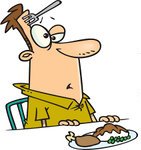 When dealing with wounds, there is one thing that horse owners seem to fear about all others. It is not the scar that the wound might leave. It is not infection, nor any consequences from bacteria setting up shop in the horse. It is not disfigurement, or interference with normal function after healing. Above all, it seems to be this.
When dealing with wounds, there is one thing that horse owners seem to fear about all others. It is not the scar that the wound might leave. It is not infection, nor any consequences from bacteria setting up shop in the horse. It is not disfigurement, or interference with normal function after healing. Above all, it seems to be this.
Proud flesh.
(Cue the Twilight Zone music before continuing).
Makes your skin crawl just thinking about it, doesn’t it? The thought of a massive, non-healing, ulcerated, stinky, ugly mess that hangs from, and gets in the way of, your beloved horse is nightmarish. The thought of your horse becoming a permanent fly magnet (more so than he already is) keeps you up at night. And, understanding this, I have one question: “Why?”
Here’s the thing. For all of the fear and trepidation, people seem not to understand that proud flesh is normal tissue. That’s right – it’s a product of the normal healing of Type 2 wounds. It’s just granulation tissue. But proud flesh is just normal granulation tissue gone wild.
Think of proud flesh like chocolate. There’s nothing inherently wrong with eating chocolate. In fact, there may even be some health benefits to eating chocolate.* However, as much as you might like to as much chocolate as you like, the fact is that if you do, you’ll wind up fat and unhealthy. That’s not chocolate’s fault – that’s your fault.
Proud flesh is like that. Granulation tissue is wonderful stuff, and it’s necessary to heal Type Two wounds. But if there’s proud flesh in a wound, it’s because the granulation tissue hasn’t been properly monitored. Period.
INTERESTED READER: “So, Dr. Ramey, how do you properly take care of wounds so as to prevent proud flesh formation?”
DR. RAMEY: “I’m glad you asked.”
At this point, it might be useful to read (or reread) the article on Type Two wounds. These are the wounds that can’t be sewn back together. There’s been too much tissue lost, or too much time passed for the edges of the wound to be reintroduced. So the body, in its effort to heal (which it always tries to do), begins to make granulation tissue.
 Remember, this is a good thing. Granulation tissue is trying to fill the hole that’s been left in your horse. You should be grateful for granulation tissue. It is your horse’s friend (and your friend, by proxy). It’s just that you only want your friend to stay around so long; you don’t want your friend to overstay his welcome. Come to think of it, for this analogy, you don’t want granulation tissue to be like a visit from annoying relatives.
Remember, this is a good thing. Granulation tissue is trying to fill the hole that’s been left in your horse. You should be grateful for granulation tissue. It is your horse’s friend (and your friend, by proxy). It’s just that you only want your friend to stay around so long; you don’t want your friend to overstay his welcome. Come to think of it, for this analogy, you don’t want granulation tissue to be like a visit from annoying relatives.
Anyway, the reason that proud flesh usually forms is that it doesn’t know when to stop. If it gets beyond the edges of your horse’s wound, it apparently gets disoriented (so to speak). It just keeps on growing. Granulation tissue doesn’t really want to make you upset, by becoming proud flesh, it’s just doing what it thinks it’s supposed to do.
Which is why it’s up to you – with the help of your veterinarian – to take care of it.
So here’s what you do.
1) At the start of things, when granulation tissue first starts growing, you can pretty much leave it alone. You can clean the surface of surface goo, and you can cover it up – or not – and the granulation tissue will grow, and you can be very happy and grateful that the granulation tissue is helping your horse heal his wound. You can put just about anything you want on it, as long as you wouldn’t mind putting the same thing in your eye.
BRIEF ASIDE: The “would you put it in your eye” rule is actually a pretty good rule to follow when it comes to wounds. There are all sorts of awful things that people put on granulation tissue, from caustic chemicals to colorful ointments and sprays, but, honestly, they’re mostly just a bother to the granulation tissue. Some of them – like caustic chemicals – are actually harmful. Remember, granulation tissue is your friend. You wouldn’t want to hurt your friend, would you?
2) When the wound is filled up with granulation tissue, you can do one of a couple of things to keep it from growing beyond the wound edges (which is where the trouble starts, and granulation tissue morphs into proud flesh). Those things are:
a. Keep the wound under a bandage. Pressure keeps granulation tissue from growing and getting “proud.”
b. Put a corticosteroid ointment on it. Corticosteroids keep granulation tissue from growing. They also slow down wound healing a bit, however, so this is probably something that you only want to do under direction of your veterinarian.
c. Cut it back. If the granulation tissue gets growing beyond the wound edges, it’s called “exuberant” (think of you, at some of the parties that you’ve later regretted). At that point, the granulation tissue can be trimmed. That said, trimming granulation tissue is something that you definitely want your veterinarian to do. Proud flesh is chock full of blood vessels, and trimming it can result in a scene for which Freddy Krueger would be proud to take responsibility.
Eventually, usually after about 4 – 6 weeks, granulation tissue settles down, and the skin cells grow in from the sides to heal the wound. Bigger wounds take longer to heal than do smaller wounds, of course, but the important thing is that once you get things started along the right path, they usually keep going that way.
The bottom line is this; don’t be afraid of proud flesh. It’s just your friend, granulation tissue, but your friend is telling you that he needs some attention. Just like most friends, actually.
************************************************************************
*CLICK HERE to see an article which has absolutely nothing to do with proud flesh, but which might actually quite satisfying if you’re feeling guilty about occasionally indulging yourself with a chocolate dessert.
PS – What a website! You get to learn about horses and absolve your guilt about your last trip to the candy store at the same time!











